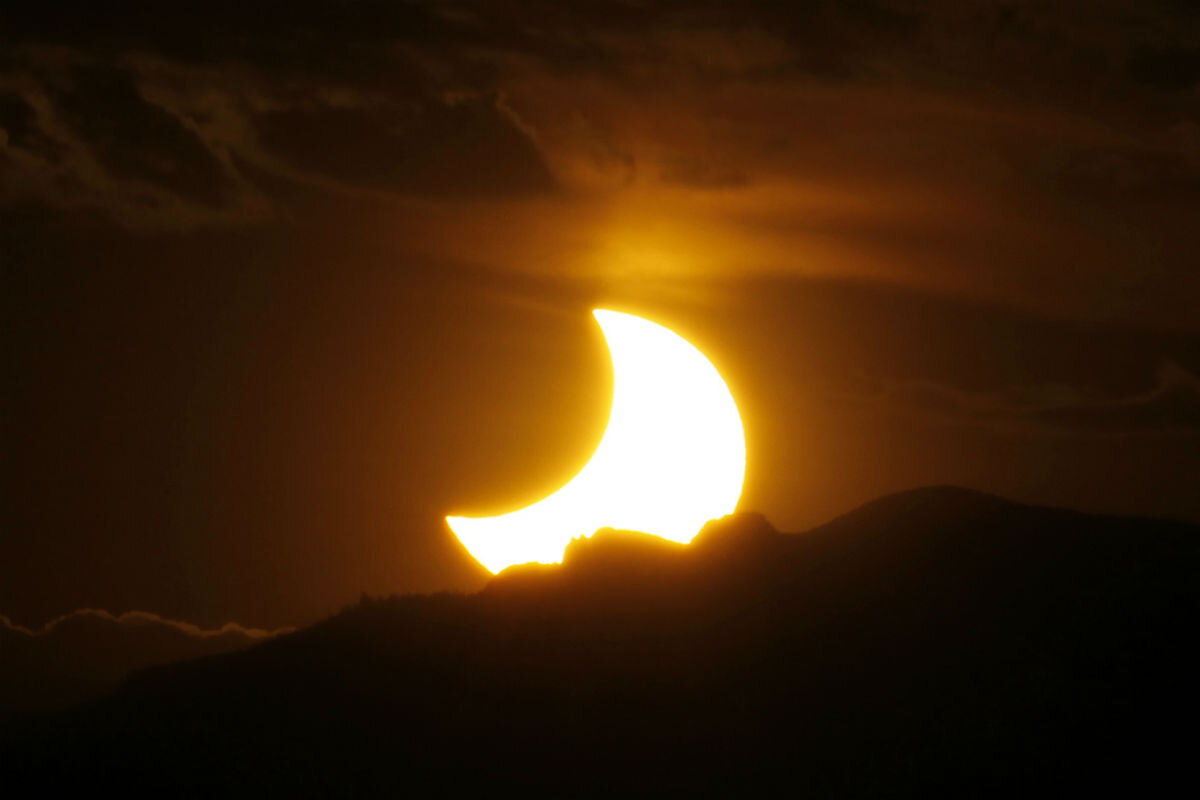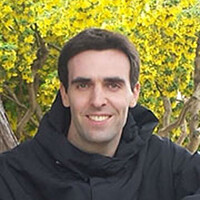Sunday's solar eclipse: Yes, these events still produce real science
Loading...
Total solar eclipses only happen once every year or two, and when they do they're over in a flash.
In order not to waste a second of the one coming this summer, which will trace out a thin path across the continental United States, scientists are practicing on an annular eclipse Sunday in Argentina. The August eclipse is sure to , and scientists are excited for the research opportunities the rare conditions represent.
Eclipses have a rich history of contributing to scientific discovery, even providing the first proof of Albert Einstein’s general theory of relativity.
The sun, moon, and Earth will align on August 21, when the new moon passes directly in front of the sun, casting its small shadow onto the Earth. While solar eclipses happen on average, total eclipses are much less common, only coming once every year or two – and when they do, the moon's shadow often falls onto the oceans that cover most of the planet’s surface.
When they do make landfall, they cause a stir, and getting modern scientists to brave the sands of the Sahara or the wildlife of the Arctic for a glimpse.
“All the team have had to do safety training, . They will have a guard with a rifle,” astronomer Huw Morgan told the Guardian, describing his colleagues' preparations for a 2015 eclipse observed from the Norwegian island Svalbard. "I hope they come back in one piece."
What’s all the fuss about? One of the scientists making the pilgrimage to Argentina this weekend is Jay Pasachoff of Williams College in Williamstown, Mass., and on Sunday he’ll see his . (That includes total, partial, and annular eclipses like Sunday's, when the moon blocks out the center of the sun, leaving a ‘ring of fire.’)
He says there's a lot of new science to be done each time, comparing an eclipse researcher to a heart surgeon who gets to look inside a human heart for just a few minutes every couple of years.
"We have new theories to test... We have more powerful and faster detectors than we used to. And the sun is different every time as we advance through the 11-year sunspot cycle," he explains to ���Ǵ��� in an email.
It might seem paradoxical to study the sun while the moon is in the way, but the million-fold reduction in brightness brings out features normally hidden by the star’s radiance.
One such feature is the mysterious corona, the wispy jets of plasma that extend millions of miles from the sun’s surface. Only during a solar eclipse does this poorly understood solar “crown” reveal itself to the naked eye.
“It’s one of the big mysteries of astronomy,” Dr. Morgan told the Guardian.
The corona is 1 to 2 million degrees Kelvin, he explained, even though the sun's surface is only about 6,000 Kelvin. "There’s this huge jump in temperature as you move away from the heat source.”
What's more, irregular bits of light and darkness around the rim of the moon known as are another phenomenon of interest. Arising when sunlight shines through lunar valleys or gets blocked by lunar mountains, the patterns can help scientists better understand lunar geography.
Researchers also record the temperature drop caused by the momentary lapse in sunlight, which can be .
Such a drastic change in temperature can affect sensitive instruments, which is one of the reasons Dr. Pasachoff is in Argentina this weekend, in addition to wanting to practice all the different measurements he’ll be coordinating this summer.
"A lot of the reason for going to the annular eclipse is to get the routine down," Pasachoff told Space.com. "There's a lot of juggling, and practice helps. It helps us so we know we'll get it right in August."
Ultimately, an annular eclipse just isn’t as good as the real deal. Even though the moon will cover 99% of the solar disc on Sunday, the surrounding sky will still be 10,000 times brighter than what observers directly in the shadow’s path will see this summer, Space.com reports.
"That's bright enough to hide very interesting phenomena," Pasachoff said. "You really have to be within totality – and not even a few miles off to the side [of the path] – to really get the benefit of what we will be able to see on Aug. 21. I hereby appeal to people who think 90 percent or 99 percent coverage is enough. It's not good enough. You have to be within 100 percent."
Pasachoff and the other scientists heading into the path of the August eclipse will be participating in a tradition of scientific discovery that includes the first conclusive evidence of Einstein’s theory of relativity in 1919.
In an effort to dethrone the reigning king, Newtonian mechanics, in explaining the gravitational force, Einstein’s theory predicted that the sun’s hulking mass would curve passing light beams twice as much as would have been expected otherwise.
By comparing the observed location of stars near the solar rim during an eclipse with their “proper” location (as seen on a regular night), Sir Arthur Eddington hoped to settle the debate with a precise measurement of the shift.
Dispatching two teams to observe the eclipse from off the west coast of Africa, and Brazil, two incredible strokes of meteorological luck allowed him to confirm that Einstein was in fact onto something.
This year, Pasachoff describes how Brad Schaefer of Louisiana State University aims to fill Eddington’s shoes.
"We are trying to recreate the observations that Arthur Eddington made of the eclipse in 1919 that verified Einstein's theory and made Einstein famous," he told Space.com.
Those interested in helping out with the scientific effort this summer can participate in a collaboration between Google and UC Berkeley to create a crowdsourced megamovie of the eclipse with their smartphones, and people who can’t get to the path of the eclipse will be able to watch it online at .
[Editor's note: An earlier version of this article mis-identified the moon's phase during a total eclipse. Eclipses happen when a new moon passes between the Earth and sun.]





